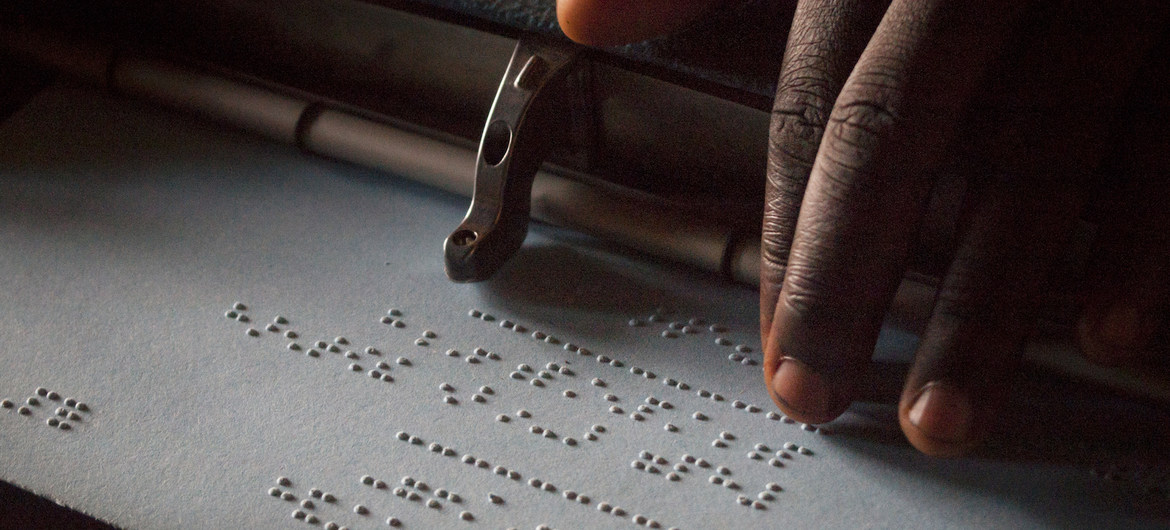World Braille Day
World Braille Day, celebrated on January 04 since 2019, is observed to raise awareness of the importance of Braille as a means of communication in the full realization of the human rights for blind and partially sighted people.
World Braille Day was established by the UN General Assembly in December 2018. The date also marks the birth anniversary of Louis Braille, who at the age of 15, invented the tactile system for reading and writing for use by people who are blind or visually impaired.
What is Braille?
 Braille is a tactile representation of alphabetic and numerical symbols using six dots to represent each letter and number, and even musical, mathematical and scientific symbols. Braille is read by passing one’s fingertips over an arrangement of between one to six embossed dots. Braille can be written using a Braillewriter, a device similar to a typewriter, or by using a pointed stylus and a Braille Slate to punch dots on paper.
Braille is a tactile representation of alphabetic and numerical symbols using six dots to represent each letter and number, and even musical, mathematical and scientific symbols. Braille is read by passing one’s fingertips over an arrangement of between one to six embossed dots. Braille can be written using a Braillewriter, a device similar to a typewriter, or by using a pointed stylus and a Braille Slate to punch dots on paper.
Braille (named after its inventor in 19th century France, Louis Braille) is used by blind and partially sighted people to read the same books and periodicals as those printed in a visual font.
Braille is essential in the context of education, freedom of expression and opinion, as well as social inclusion, as reflected in article 2 of the Convention on the Rights of Persons with Disabilities.
Reaching blind and visually impaired persons
Even under normal circumstances, persons with disabilities - one billion people worldwide - are less likely to access health care, education, employment and to participate in the community. They are more likely to live in poverty, experience higher rates of violence, neglect and abuse, and are among the most marginalized in any crisis-affected community.
For the visually impaired, life under lockdown has posed several issues in terms of independence and isolation, especially for people who rely on the use of touch to communicate their needs and access information. The pandemic has revealed how critically important it is to produce essential information in accessible formats, including in Braille and audible formats. Otherwise, many persons with disabilities could face a higher risk of contamination due to a lack of access of guidelines and precautions to protect and reduce the spreading of a pandemic. COVID-19 has also emphasized the need to intensify all activities related to digital accessibility to ensure digital inclusion of all people.
During the COVID-19 pandemic, many good practices have been implemented by parts of the United Nations system to promote a disability-inclusive response to the COVID-19 and disseminate information in Braille.
Source : UN
Celebrations in India
In celebration of International Braille Day, the Department of Empowerment of Persons with Disabilities, in collaboration with multiple National Institutions, Comprehensive Regional Centers (CRCs), and various non-governmental organizations, conducted numerous programmes on January 4. The initiatives aimed to enhance the capabilities of visually impaired and divyangjan individuals, fostering self-reliance.
Last Modified : 1/8/2024
This topic provides information about World Health...
Provides information about International Day of Cl...
The World Day to Combat Desertification and Drough...
This topic provides information about Sugamya Pust...
